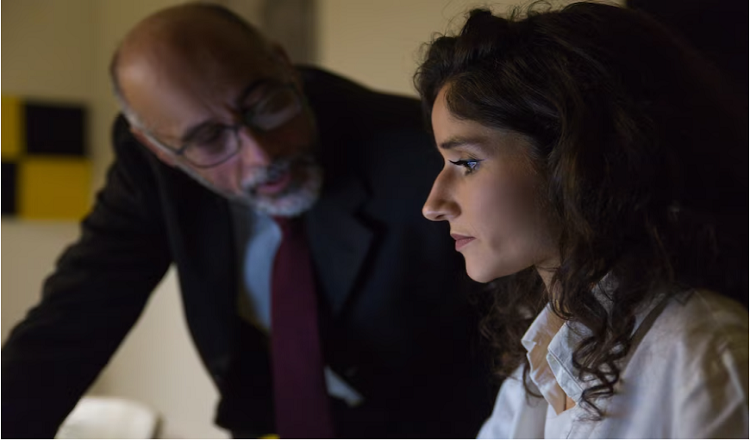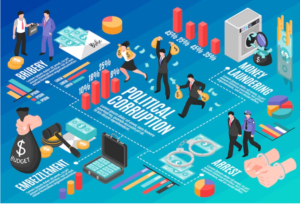The psychology of crime: what drives a person to commit crimes?

Crime is a problem that has been bothering people for hundreds of years. From small crimes like shoplifting to more major ones like murder and fraud, criminal behaviour can have a big effect on people and their communities. The FBI’s Uniform Crime Reporting Programme says that in 2019, there were more than 6 million crimes that were recorded. Law enforcement and the justice system work hard to stop crime and punish those who do it. However, knowing the psychology behind crime can also help solve this problem.
The study of psychology has made a lot of important contributions to understanding what makes people do bad things. There are many things that can lead to violent behaviour, including biological and psychological factors as well as social and economic factors. By understanding these things, we can come up with better ways to avoid crime, cut it down, and keep the public safe. In this blog, we’ll explore the fascinating world of the psychology of crime. We’ll look at the different things that can affect criminal behaviour and look at the latest studies and ideas on this subject. So, get ready to go deep into the thoughts of criminals.
Biological factors
Researchers have looked at genetics, brain structure, and hormones as possible causes of violent behaviour for a long time. Studies have shown that some changes in a person’s genes may make it more likely for them to do illegal things. Also, brain imaging studies have shown that people who have committed crimes have different brain structures, especially in areas that have to do with making decisions and controlling impulses. Hormones like testosterone have also been linked to being violent and doing bad things.
But it’s important to remember that biology isn’t the only thing that makes people do bad things. The world also plays a big role. Even though study has given us some information about the link between biology and crime, there is still a lot to learn. By learning more about how genetics and other things interact with each other, we can learn more about why people do bad things and come up with better ways to stop them and help them change.
Things to do with the mind
Psychological issues have also been looked at as possible reasons why people do bad things. Some personality features, like being impulsive, wanting to try new things, and having little empathy, have been linked to a higher risk of criminal behaviour. Criminal behaviour has also been linked to mental disorders, such as antisocial personality disorder and drug use disorders. Also, cognitive processes like making decisions and fixing problems may have something to do with criminal behaviour.
Research has given us important information about the complicated link between mind and crime. By knowing the psychological factors that may lead to criminal behaviour, we can come up with more effective ways to stop it and stop it from happening in the first place. But it’s important to be careful when talking about this topic, because not everyone with these traits or illnesses will act criminally, and environmental factors also play a big role in determining behaviour.
Social things
Family, friends, and society, as well as other social factors, have also been looked at as possible causes of criminal behaviour. People are more likely to commit crimes if they don’t have any good role models, if their families aren’t stable, or if they’ve been exposed to violence. A person may also decide to do something illegal because of group pressure or because that’s what everyone else does. Culture can also play a role, with some cultural beliefs and ideals possibly making people more likely to do bad things.
Research has shown that a person’s social situation can have a big effect on how likely they are to commit a crime. We can work to avoid and reduce crime by addressing these underlying social problems, such as by strengthening family structures and promoting positive social norms. But it’s important to remember that people are different and that poverty and injustice, among other things, also play a role in criminal behaviour.
Economic factors
Poverty and inequality in the economy have also been looked at as possible causes of violent behaviour. Studies have shown that people who are poor or who are having trouble paying their bills may be more likely to do illegal things as a way to survive or to get money. Income imbalance has also been linked to higher crime rates because people in lower socioeconomic positions feel left out and don’t have access to resources.
Research has given us important information about the complicated link between money and crime. We can work to stop and reduce crime by fixing the economic problems that cause it, like poverty and injustice. But it’s important to think about this topic in a nuanced way, because not everyone in a bad economic situation will act criminally. Other things, like social and psychological factors, also play a big role.
Legal factors
Crime rates are affected a lot by legal things like rules, policies, and the criminal justice system. Effective rules and policies can stop people from doing wrong and give those who do wrong something to worry about. The criminal justice system, which includes the police, judges, and prisons, also plays a big part in preventing crime and dealing with it when it happens.
Different law interventions, like mandatory minimum sentences, community policing, and restorative justice programmes, have been studied to see how well they work. By figuring out how well these interventions work, we can find the best ways to do things and decide how to use our resources to avoid and reduce crime. But it’s important to remember that the law system isn’t perfect and can keep inequalities and wrongs going, which can also make people do bad things.
Stopping and doing something
To stop and reduce crime, you need a multifaceted plan that includes early assistance, education, and rehabilitation. Early intervention programmes can find people who are at risk of doing something bad and help them deal with their problems before they turn to crime. Education programmes can teach good values and rules and give people skills and chances that can make it less likely for people to do bad things. Rehabilitation programmes can help people who have already broken the law deal with the problems that led to their actions and get back into society.
Researchers have looked at how successful community-based programmes, cognitive-behavioral therapy, and drug treatment programmes are at preventing and treating drug use. By looking at how these methods work, we can find the best ones and make smart choices about how to use our resources to stop and lower crime. But it’s important to realise that no single method is a silver bullet. For effective crime prevention and reduction, you need a comprehensive approach that looks at many factors.
Conclusion
In conclusion, crime in the United States is a complicated problem with many different causes. These causes include biological, psychological, social, economic, and legal factors. Research has given us important information about these factors and how they affect crime rates, as well as effective ways to avoid and deal with crime.
When it comes to dealing with crime in the US, this has important implications for policymakers, law officers, and individuals. Policymakers and law enforcement must recognise how complicated and interconnected the problem is and work towards comprehensive, evidence-based answers that address a number of factors that contribute to crime. People can also help by supporting programmes and policies that encourage prevention and intervention and by promoting good ideals and norms in their communities.
In the end, solving the problem of crime in the United States will take a group effort that puts evidence-based approaches first, gets to the root of the problem, and promotes fairness and justice. We can make a better and more fair society for everyone if we all work together.
Read More You May Like:
- How technology is used to solve crimes
- How communities can effectively prevent crime through cooperation
- Examining the effects of trauma and social inequality on criminal behavior
- Delving into the root causes of rising crime rates
- Analyzing the effect of incarceration on crime rates








